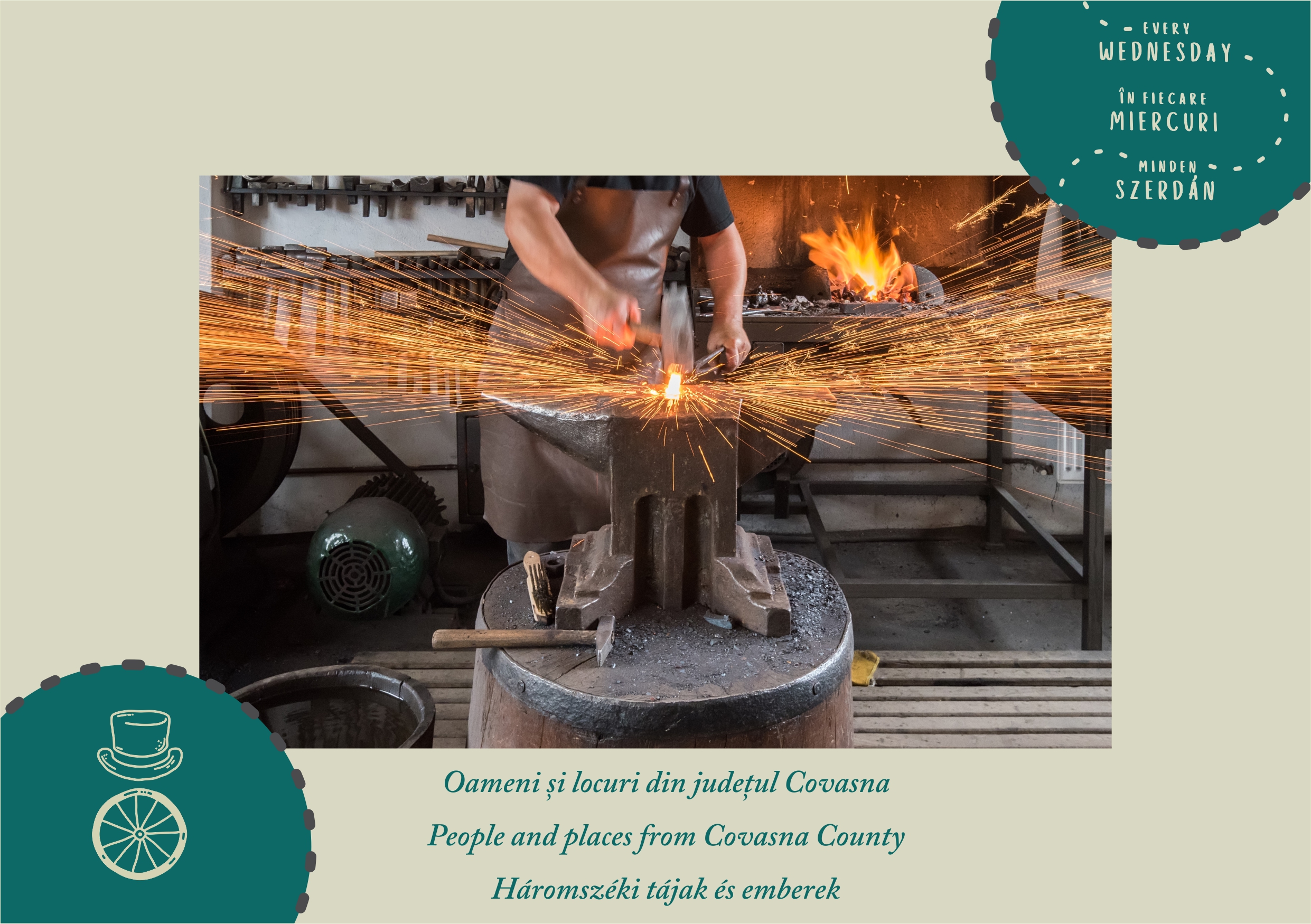
Wrought iron present
One rarely stops on the way to the Vârghiș Gorge. It’s an all-day, strenuous hike, and one has to eat, so there’s not much more time. Even if it’s otherwise, for decades, we could only knock on the door of the woodcarver families from Vârghiș, and there are so many carved washing paddles in the collections of Transylvanian families that we cannot even count them. Of course, to a certain extent, it has always been a question of marketing, and the majority of rubbernecks couldn’t do anything about the folk handicraft, which was increasingly losing its practical side. Since then, György Nagy’s pragmatic art has made a huge difference. His works ranging from the railing ornaments and lamps of the Székely National Museum to the gates of the Székely Mikó High School, or the reconstructed replica of the former locksmith trade sign on the “key house” in Sfântu Gheorghe, flash the possibility of the renaissance of a craft in decline. According to the craftsman, smithery nowadays is exactly the opposite of what it should be: in design, we cling to the old, but in technology, where we should hold onto tradition, we don’t. But we should only work with fire, as we once did, and we should develop the forms because that’s how Baroque, Renaissance, and Art Nouveau have always evolved from folk smithery.
We could listen to this and similar other things if we stopped at György Nagy’s gate in Tălişoara. Anyone looking for it will recognise the place by the beautiful wrought iron gate and fence that runs the length of the property, which are typical characteristics of craftsmanship. You will be greeted by exemplary order in the workshop, as well as in the small blacksmith museum, which was set up to honor the craft and his father, who was also a blacksmith. This is the imprint of a world, the possible disappearance of which would be a common loss for us all.
Samu Csinta